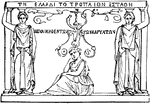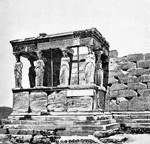Clipart tagged: ‘Caryatides’

Jewelry Box
This jewelry box is designed in a Cinquecento (Italian 16th century) style in bronze, gilt and silver.…

Caryatides
"Caryae was a city in Arcadia, near the Laconian border, the inhabitants of which joined the Persians…
Caryatis from the Erechtheum at Athens
Caryatides are a blending of architecture and sculpture, but they are not of frequent occurrence. These…
Profile of the Caryatis with Pedestal and Entablature
Caryatides are a blending of architecture and sculpture, but they are not of frequent occurrence. These…
